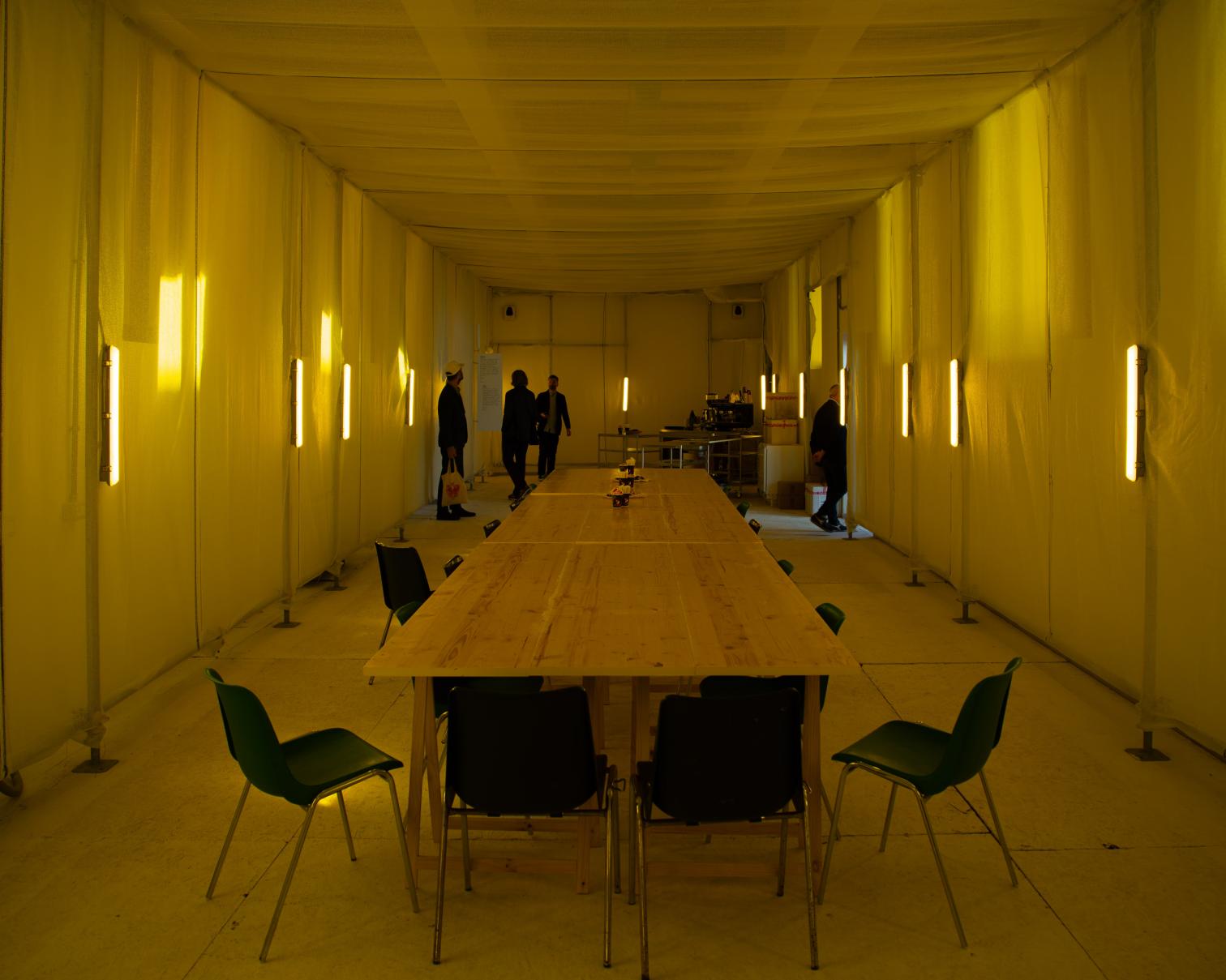Bienal de Venecia 2025: Cuando la Arquitectura se Enfrenta al Calor Global
La edición 19 de la Bienal de Arquitectura de Venecia premia propuestas que responden al cambio climático desde lo local, lo ancestral y lo innovador.
Bajo la curaduría del arquitecto y urbanista Carlo Ratti, la Bienal de Arquitectura de Venecia 2025 presentó un enfoque comprometido con los desafíos ambientales y sociales del presente. Su lema, “Intelligens: Natural. Artificial. Collective.”, propuso repensar la inteligencia arquitectónica más allá de lo digital, valorando saberes tradicionales, tecnologías apropiadas y la colaboración entre comunidades.
El León de Oro a la Mejor Participación Nacional fue otorgado a Baréin por su instalación “Heatwaves”. Concebida como un pabellón habitable, la propuesta demostró cómo técnicas tradicionales de enfriamiento pasivo pueden integrarse a la arquitectura contemporánea como respuesta al aumento global de temperaturas.
Las menciones especiales recayeron sobre el pabellón del Reino Unido y el de la Santa Sede. Este último transformó una iglesia en un espacio vivo de restauración, comisariado por Giovanna Zabotti y Marina Otero, con diseño de Tatiana Bilbao Estudio y MAIO Architects.
En la muestra central, el León de Oro fue para “Canal Café”, de Diller Scofidio + Renfro, una instalación que ofrecía café preparado con agua purificada de los canales venecianos. También fue premiado el sistema modular “Aire” de MAIO Architects.
El León de Oro a la Trayectoria fue concedido a Italo Rota y Donna Haraway, por sus aportes a la relación entre espacio, cuerpo y tecnología.
Venice Biennale 2025: When Architecture Confronts Global Heat
The 19th edition of the Venice Architecture Biennale rewards proposals addressing climate change through local, ancestral, and innovative strategies.
Curated by architect and urbanist Carlo Ratti, the Venice Architecture Biennale 2025 embraced an agenda rooted in social and environmental challenges. The theme, “Intelligens: Natural. Artificial. Collective.”, invited a redefinition of architectural intelligence by integrating traditional knowledge, appropriate technology, and collective action.
The Golden Lion for Best National Participation went to Bahrain for its “Heatwaves” installation. Designed as a habitable pavilion, it showcased traditional passive cooling methods—like wind towers and thermal mass—that are effective, poetic, and scalable in the face of global warming.
Special mentions were awarded to the United Kingdom and the Holy See. The latter transformed a church into a living space of healing and dialogue, curated by Giovanna Zabotti and Marina Otero, and designed by Tatiana Bilbao Estudio and MAIO Architects.
In the central exhibition, the Golden Lion went to “Canal Café” by Diller Scofidio + Renfro, where visitors could enjoy coffee made with purified water from Venice’s canals—highlighting ecological urban systems. The modular system “Aire” by MAIO Architects was also recognized for its climate-adaptive, biodegradable structures.
The Golden Lion for Lifetime Achievement was awarded posthumously to Italo Rota, and to philosopher and biologist Donna Haraway, for their contributions to understanding the connections between space, bodies, and technology.

.gif)





.jpeg)

Comentarios
Publicar un comentario